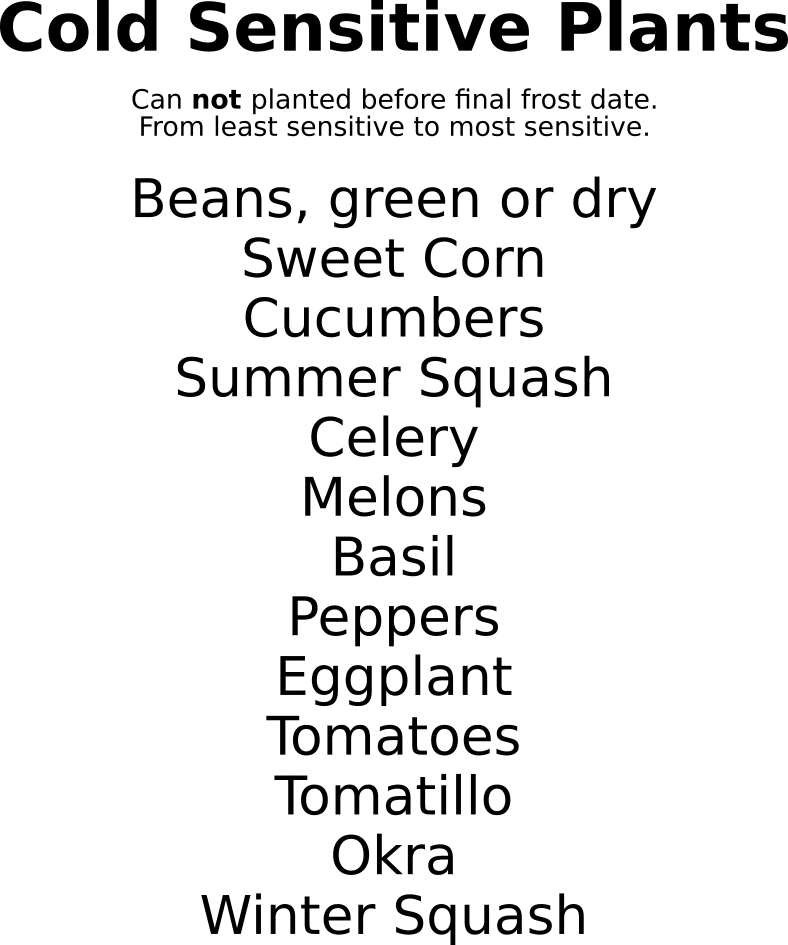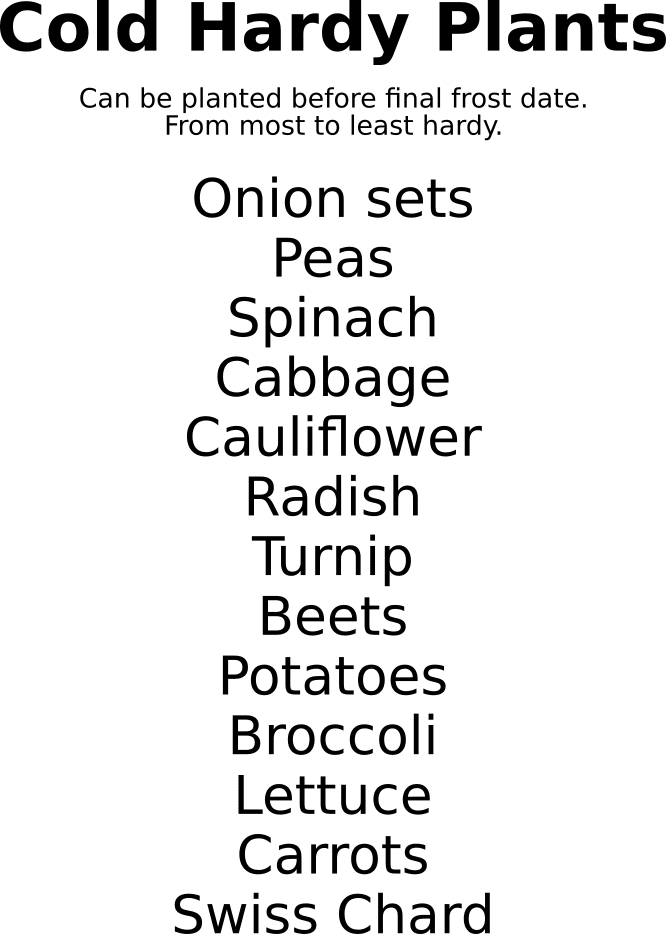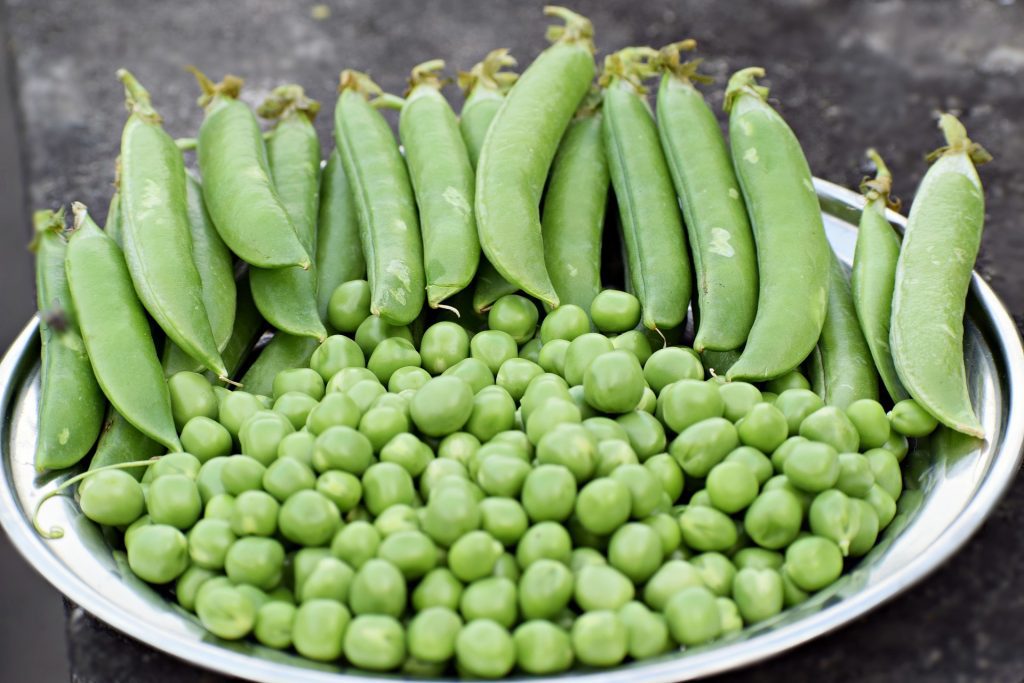

Spring is so close, so very, very close, that we are all getting anxious to get into the garden and start planting something. Every year, after a week or two of sunny, pleasant weather, everyone rushes to the garden center and buys a whole flat of garden veggies. Who doesn't want to be the first one with fresh tomatoes? But, like Admiral Ackbar says in Return of the Jedi: It's a trap!
I promise you that sometime before May 20th there will be a cold snap – or worse, another snow storm! — that will kill off all your lovely tomato and pepper plants. It happens nearly every year. Pleasant weather notwithstanding, the reality is, most of the garden plants we love should not be planted until all danger of frost is passed. For most of North Dakota, the average last frost date is around May 15. No matter how tempted you are to start planting, you should not plant any cold-sensitive plants before then.

On the other hand, despite the terrible weather this past week, there's still plenty you can do to start your garden. The truth is, there are some plants that actually thrive in cold temperatures. After the snow and rain from last week's storm have dried out enough that you can work the soil, it's time to start planting cold-tolerant plants.

Peas relish a little cold and snow and they really hate hot weather. In fact, if you wait until the end of May to plant peas, you may find them struggling in the heat of early July. They may quit producing altogether. Wando peas are the one exception I've found. This heirloom variety does relatively well in hot weather. Relative is the key word: they will produce in hot weather, just not as prolifically. And after two or three weeks of hot weather, they stop producing altogether.

Spinach, like peas, is another plant that does not do well if you wait till May to plant it. As soon as the weather turns hot, it will bolt (that is, go to seed and taste bitter with a stringy texture.) Our springs are so short, turning quickly to warm summer days, that if you want to get any spinach from your garden, now is the time to plant it.
Because spinach is so fussy about our short springs, I don't even bother planting it. Instead, I grow Swiss chard. A relative of beets, Swiss chard leaves are more tender and milder tasting than kale. It is a good substitute for spinach in most recipes. Both the leaf and stem are edible. If you choose a colored variety like Bright Lights, Gold or Ruby, you will have the most beautifully colorful dishes. But put that thought on hold. It won't be time to plant Swiss chard until the first part of May.
Onions You can also start planting your onion sets. Onions are photoperiodic. That means that they are sensitive to the amount of daylight they receive. When the days are 12 hours or longer, the onion stops producing leaves and starts forming the bulbs. Right now our days are at about 12 hours long. That means that if you plant onion sets now, they will have a good six months of long days, until about mid-September, to form nice big bulbs.
Since I'm trying to grow enough food to feed my family all year long, I look for onions that will store well during the winter. Copra and Stuttgarter are both excellent long-storing onions. Ask your local greenhouses if they have these varieties. I've found Copra sold as plants (Not sets. They look like small green onions and quickly grow into nice onions.) at a local greenhouse. The Stuttgarter variety is quite popular in online catalogs.
Another long-storing onion that I like is Dakota Tears, an heirloom variety born and bred right here in North Dakota. You can get it from one of my favorite seeds sources, Prairie Road Organics. Unfortunately, it's only available in seed and the window for successfully starting onions from seed has passed. You should start seeds in early March so that they will be ready for transplant in late April or May.
Starting onions from seed takes a little more care and attention than some other seeds, but the payoff is well worth it. You get lots of onions for a fraction of the cost of onion sets and you have a lot more variety to choose from. Plan now to start your onion seeds early next year so that you can start experimenting with the different varieties.
Leeks are another cold-hardy vegetable. They can tolerate temperature into the 20's, so you can safely plant them now. Choose a variety that will mature in 100 days or less. You can start it from seed or order plants (they're about the size of small green onions you buy at the grocery store) from online catalogs.
So even though you'll have wait a while before buying the tomato and pepper plants, you can still get gardening satisfaction by planting peas, spinach and onions. Let the gardening begin!